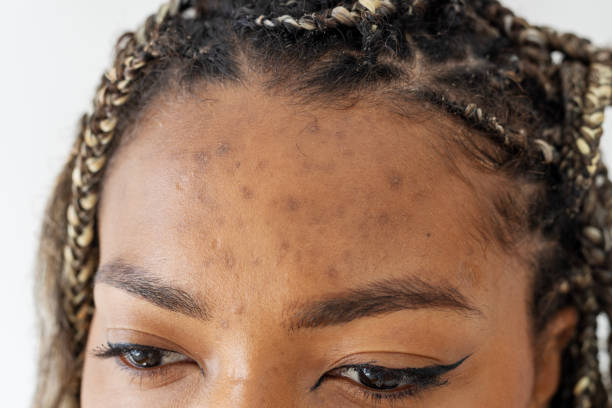
by bilalraja1 | Oct 21, 2025 | Health
Acne is one of the most common skin concerns affecting millions worldwide, often leaving behind more than just pimples. Many individuals who undergo acne treatment wonder whether these procedures can also address the lingering dark spots and hyperpigmentation caused by acne. This comprehensive guide explores how Acne Treatment in Abu Dhabi can impact dark spots, the types of treatments available, and what to expect in the journey toward clearer, more even-toned skin.
Understanding Acne and Its Aftermath
The Nature of Acne and Hyperpigmentation
Acne is a skin condition characterized by the presence of pimples, cysts, and pustules, often accompanied by inflammation. When acne heals, it can sometimes leave behind dark spots, known as hyperpigmentation. These spots are caused by an overproduction of melanin in response to skin inflammation or injury. While acne itself is a temporary condition, hyperpigmentation can persist long after the pimples have gone, affecting skin appearance and confidence.
The Link Between Acne and Dark Spots
The development of dark spots is directly related to the skin’s healing process after acne lesions. The inflammation associated with breakouts stimulates melanin production, leading to uneven pigmentation. Addressing these dark spots requires targeted treatments that focus not only on acne clearance but also on skin lightening and regeneration.
The Role of Acne Treatment in Addressing Dark Spots
Can Acne Treatment in Abu Dhabi Help with Dark Spots?
While the primary goal of acne treatment is to eliminate active breakouts, many advanced treatment options also contribute to reducing the appearance of dark spots. These therapies often include skin renewal, pigmentation correction, and inflammation reduction, which collectively help in fading hyperpigmentation over time.
How Acne Treatments Contribute to Dark Spot Reduction
- Inflammation Control: Many treatments aim to reduce skin inflammation, which is a key factor in hyperpigmentation formation.
- Skin Cell Turnover: Procedures that promote exfoliation and skin renewal help lighten dark spots by removing pigmented skin layers.
- Pigmentation-Targeted Therapies: Specific treatments contain ingredients or utilize technologies designed to interfere with melanin production.
- Long-term Acne Control: Managing active breakouts prevents new dark spots from forming, ensuring ongoing skin clarity.
Types of Acne Treatments That Help with Dark Spots
Topical Treatments and Skincare Products
Over-the-counter and prescription creams containing ingredients such as retinoids, vitamin C, hydroquinone, and niacinamide are effective in lightening dark spots. Consistent application of these products, combined with sun protection, accelerates the fading process.
Chemical Peels
Chemical peels involve applying a chemical solution to exfoliate the top layers of skin, promoting regeneration and reducing hyperpigmentation. They are particularly effective for mild to moderate dark spots and can improve overall skin texture.
Laser and Light-Based Therapies
Advanced laser treatments target pigmented areas precisely, breaking down melanin deposits. These procedures are suitable for stubborn dark spots and can significantly enhance skin tone uniformity.
Microneedling
This minimally invasive procedure stimulates collagen production and skin renewal, which can help diminish dark spots while improving skin texture and elasticity.
Combining Treatments for Optimal Results
A personalized skincare plan often involves combining various therapies to address both active acne and residual hyperpigmentation effectively. Consulting with a qualified dermatologist ensures a tailored approach that maximizes benefits.
Factors Influencing the Effectiveness of Acne Treatment on Dark Spots
Skin Type and Severity
Different skin types respond differently to treatments. Understanding the severity of hyperpigmentation and skin sensitivity helps in selecting the most suitable therapies.
Consistency and Sun Protection
Regular adherence to treatment regimens and diligent sun protection are crucial in preventing dark spots from worsening and ensuring optimal results.
Treatment Duration and Expectations
While some treatments may show noticeable improvements within weeks, others require a few months of consistent care. Patience and realistic expectations are vital for successful outcomes.
Post-Treatment Care and Maintenance
Skincare Routine Adjustments
Incorporating gentle cleansers, moisturizers, and targeted brightening agents can enhance treatment results and prevent new spots from forming.
Sun Avoidance and Protection
Using broad-spectrum sunscreens daily is essential to shield the skin from UV rays, which can exacerbate hyperpigmentation.
Follow-up and Monitoring
Regular follow-up appointments with skincare professionals help monitor progress, adjust treatments if necessary, and maintain skin health.
Final Thoughts on Acne Treatment and Dark Spot Reduction
Addressing dark spots effectively requires a comprehensive approach that combines acne management with targeted pigmentation treatments. When done correctly, acne treatment Abu Dhabi can significantly improve skin clarity, evenness, and overall appearance. It’s important to work with experienced skincare professionals who can recommend personalized therapies suited to individual skin needs. Ultimately, consistent care, sun protection, and patience are key to achieving a radiant, spot-free complexion.
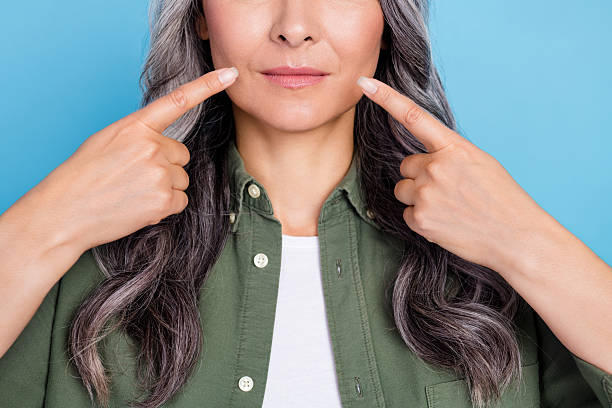
by bilalraja1 | Oct 21, 2025 | Health
A youthful and well-defined facial appearance is often associated with vitality, confidence, and beauty. As we age, however, our facial features can lose their firmness and volume, leading to sagging skin, deep lines, and less defined contours. One of the advanced cosmetic procedures designed to address these concerns is the Vector Facelift in Abu Dhabi. This innovative technique is tailored to enhance facial contours, providing a more rejuvenated and natural look. But how exactly does a vector facelift improve facial contours? Let’s explore this in detail.
Understanding Facial Aging and Contour Changes
The Natural Aging Process and Its Impact on Facial Structure
Facial aging is a complex process influenced by genetic, environmental, and lifestyle factors. Over time, the skin loses elasticity, underlying fat pads diminish, and bone density decreases, leading to a sagging appearance. These changes typically manifest as jowls, deep nasolabial folds, and loss of definition in the cheeks and jawline. Understanding these natural transformations helps in appreciating how a vector facelift can restore youthful contours effectively.
The Importance of Facial Contours in Aesthetics
Facial contours refer to the defined lines and shapes that outline the face, including the cheekbones, jawline, and neck. Well-contoured facial features are often perceived as attractive and balanced. When these contours become blurred due to aging or weight fluctuations, the face can appear tired or less vibrant. Enhancing facial contours through targeted procedures like the vector facelift can significantly improve overall facial harmony.
What Is a Vector Facelift?
Defining the Vector Facelift Technique
The Vector Facelift is a modern surgical approach that strategically lifts and repositions sagging tissues along specific vectors—directions that optimize facial rejuvenation. Unlike traditional facelifts, which may focus on broad lifting, the vector facelift emphasizes precise movement of tissues to restore natural contours. This technique involves meticulous planning of tissue vectors to achieve optimal elevation and support.
Key Principles Behind the Procedure
The core principle of the vector facelift is to follow the natural lines and directions in which facial tissues descend over time. By lifting tissues along these vectors, the procedure aims to counteract gravity’s effects, resulting in a more youthful and harmonized appearance. The focus is on enhancing the mid-face and jawline regions, which are critical in defining facial contours.
How Does a Vector Facelift Improve Facial Contours?
Targeted Lifting of Sagging Tissues
The primary way a vector facelift enhances facial contours is through the targeted lifting of sagging tissues. By repositioning the deeper layers of the face, the procedure restores volume and firmness where it has been lost. This lifting effect creates a sharper jawline, more prominent cheekbones, and smoother neck contours, resulting in a more sculpted appearance.
Repositioning of Muscles and Skin
Beyond lifting, the vector facelift involves tightening the underlying muscles and repositioning the skin. This comprehensive approach addresses both superficial and deep layers, providing a natural-looking lift. The repositioning of these tissues helps in smoothing out wrinkles and folds, further enhancing facial contours.
Restoration of Facial Volume
A significant aspect of contour improvement is restoring facial volume, which diminishes with age. The vector facelift can be combined with fat grafting or other volumizing techniques to replace lost fat pads. This combined approach results in a fuller, more youthful look with well-defined features.
Strategic Planning of Tissue Vectors
One of the distinguishing features of the vector facelift is the strategic planning of tissue vectors. Surgeons determine the optimal directions for lifting tissues based on individual facial anatomy. This personalized approach ensures that the contours are enhanced in a natural manner, avoiding a “pulled” or artificial appearance.
Enhancing the Jawline and Neck Contours
A well-executed vector facelift significantly improves jawline definition and neck contours. By lifting and tightening tissues in these regions, the procedure reduces the appearance of jowls and double chin, creating a sleek and elegant profile.
Benefits of a Vector Facelift for Facial Contours
Natural and Harmonized Results
The primary advantage of the vector facelift is achieving natural-looking results. By following the natural vectors of tissue descent, the procedure maintains facial harmony and avoids the “overdone” appearance often associated with traditional facelifts.
Longer-lasting Effects
Because the vector facelift targets the foundational tissues and employs precise tissue repositioning, the results tend to be more durable. This longevity ensures sustained improvement in facial contours over time.
Customized Approach for Every Patient
Each face is unique, and the vector facelift allows for customization based on individual anatomy and aesthetic goals. Surgeons tailor the vectors and techniques to enhance specific features, ensuring optimal results.
Minimally Invasive Techniques
Advancements in surgical methods have made the vector facelift less invasive with reduced recovery times. Smaller incisions, precise tissue handling, and advanced suturing techniques contribute to a smoother healing process.
The Procedure: What to Expect
Consultation and Planning
Before the procedure, a thorough consultation is essential to understand the patient’s goals and assess facial structure. Surgeons analyze the natural vectors of tissue descent and plan the lifting directions accordingly.
Surgical Process
During the surgery, incisions are carefully placed to access the underlying tissues. The surgeon lifts and repositions the tissues along predetermined vectors, tightening muscles and suturing tissues in their new positions. Excess skin is trimmed, and incisions are closed meticulously.
Recovery and Results
Post-surgery, patients typically experience swelling and bruising, which subside over time. With proper care, the results become apparent within a few weeks, revealing improved facial contours, sharper jawline, and a rejuvenated appearance.
Comparing Vector Facelift to Other Contouring Procedures
Traditional Facelift vs. Vector Facelift
While traditional facelifts focus on broad tissue tightening, the vector facelift emphasizes precise, vector-based tissue repositioning. This targeted approach often yields more natural and long-lasting contours.
Non-surgical Alternatives
Non-invasive treatments like fillers and thread lifts can enhance facial contours temporarily. However, for more significant and lasting improvements, the vector facelift remains the most effective surgical option.
Combining Procedures for Optimal Results
For comprehensive facial rejuvenation, the vector facelift can be combined with other procedures such as brow lifts or eyelid surgeries. These combined treatments further enhance overall facial harmony.
Post-Procedure Care and Maintenance
Recovery Tips
Following post-operative instructions is crucial for optimal healing. This includes managing swelling, avoiding strenuous activities, and maintaining head elevation.
Long-term Maintenance
Maintaining a healthy lifestyle, protecting skin from sun damage, and considering periodic touch-up treatments can prolong the benefits of a vector facelift.
Conclusion
The Vector Facelift Abu Dhabi offers a sophisticated approach to facial rejuvenation, specifically designed to improve facial contours by lifting and repositioning tissues along natural vectors. This technique restores definition to the jawline, enhances cheek prominence, and tightens the neck, resulting in a harmonious and youthful appearance. Its personalized, precise method ensures natural results that enhance individual beauty and boost confidence.
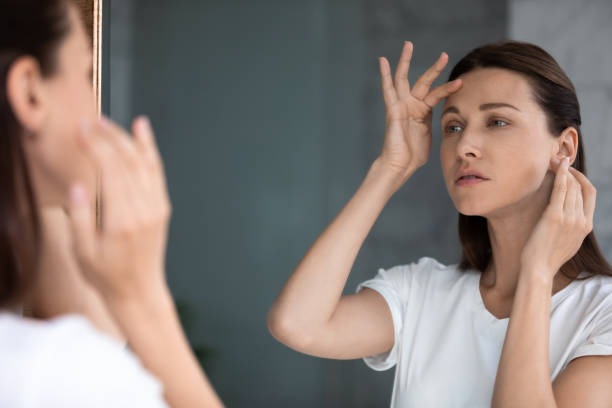
by bilalraja1 | Oct 17, 2025 | Health
A forehead lift, also known as a brow lift, is a popular cosmetic procedure designed to rejuvenate the upper face by reducing wrinkles, sagging skin, and drooping eyebrows. As individuals seek effective solutions to achieve a more youthful and alert appearance, understanding the safety and suitability of this procedure becomes essential. When considering a Forehead Lift in Abu Dhabi, many wonder if the treatment is safe across diverse skin types and conditions. This article provides comprehensive insights into the safety of forehead lifts, emphasizing their applicability and considerations for individuals with different skin characteristics.
Understanding the Forehead Lift Procedure
What Is a Forehead Lift?
A forehead lift is a surgical intervention aimed at tightening the skin and underlying tissues of the forehead and brow area. The procedure typically involves making incisions within natural skin creases or hairlines, allowing the surgeon to elevate the eyebrows and smooth out horizontal forehead wrinkles. The goal is to restore a more youthful, rested appearance, and improve facial expressions that may appear tired or angry due to sagging skin.
Methods of Performing the Forehead Lift
There are various techniques used to perform a forehead lift, each suited to different individual needs:
- Traditional (Coronal) Technique: Involves a long incision across the scalp to lift the forehead tissues.
- Endoscopic Technique: Uses smaller incisions and a camera-assisted device for less invasive skin tightening.
- Limited or Temporal Lift: Focuses on the outer brow area for targeted rejuvenation.
Expected Outcomes
A successful forehead lift results in smoother skin, elevated eyebrows, and a reduction in forehead lines. It can enhance facial harmony and provide a more refreshed appearance, boosting confidence and self-esteem.
Is a Forehead Lift Safe for All Skin Types?
The Importance of Skin Type in Cosmetic Surgery
One of the key concerns for prospective patients is whether the procedure is safe for their specific skin type. Skin characteristics such as pigmentation, elasticity, thickness, and healing capacity influence both the surgical approach and the healing process.
Skin Elasticity and Healing Response
Individuals with resilient, elastic skin tend to recover more smoothly and achieve optimal results. Conversely, those with less elastic skin may experience different healing patterns, but this does not necessarily contraindicate the procedure. Proper surgical planning and technique adaptation can mitigate potential issues.
Pigmentation and Melanin Levels
People with darker skin tones, characterized by higher melanin levels, may have an increased risk of pigmentation changes or scar hyperpigmentation. However, with meticulous surgical techniques and post-operative care, these risks can be minimized, making the procedure safe across various skin types.
Suitability for All Skin Types
Overall, Forehead Lift can be safely performed on individuals with diverse skin types. The key factors include realistic expectations, proper surgical planning, and experienced surgical expertise. A thorough consultation allows the surgeon to tailor the approach, ensuring safety and optimal results regardless of skin color or type.
Preoperative Considerations for a Safe Forehead Lift
Comprehensive Medical Evaluation
A detailed medical history and physical examination help identify any underlying conditions that could affect healing or increase risks. This includes assessing skin health, scarring tendencies, and previous surgeries.
Skin Condition Optimization
Patients are advised to follow preoperative instructions to improve skin health, such as avoiding smoking, staying well-hydrated, and managing skin conditions. Healthy skin facilitates better healing and more predictable outcomes.
Realistic Expectations and Goals
Clear communication with the surgeon ensures that patients understand what can be achieved. Setting realistic goals helps prevent dissatisfaction and promotes a positive surgical experience.
Postoperative Care and Recovery
Skin Care After Surgery
Proper wound care, sun protection, and avoiding trauma to the surgical area are vital for smooth healing. For individuals with darker skin, special attention is given to prevent pigmentation changes.
Monitoring the Healing Process
Regular follow-up appointments allow the surgeon to monitor healing progress and address any concerns promptly. This proactive approach helps ensure safety and optimal aesthetic results.
Long-Term Results and Maintenance
Results from a forehead lift are long-lasting, but maintaining healthy skin and avoiding excessive sun exposure contribute to preserving youthful appearance over time.
Additional Factors Influencing Safety and Success
Surgeon Expertise and Technique
Choosing an experienced surgeon skilled in various techniques ensures that the procedure is tailored safely to individual skin characteristics. Their expertise minimizes risks and enhances outcomes.
Customized Surgical Approach
The surgical plan is customized based on factors like skin thickness, elasticity, and facial anatomy, making the procedure safe and effective for all skin types.
Technological Advancements
Modern minimally invasive techniques and advanced tools enable safer procedures with quicker recovery times, suitable for a wide range of skin types.
Conclusion
The safety of a Forehead Lift Abu Dhabi for all skin types is well-established when performed by experienced professionals who tailor the procedure to individual skin characteristics. Proper assessment, technique adaptation, and diligent post-operative care are essential to achieving safe and satisfying results. Regardless of skin type, a forehead lift can be a safe, effective, and transformative procedure for those seeking a more youthful appearance, provided it is carried out under expert guidance. If considering this procedure, a comprehensive consultation will help determine the best approach suited to your unique skin and aesthetic goals.
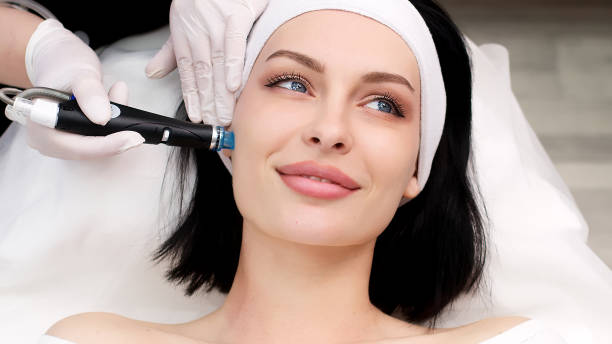
by bilalraja1 | Oct 16, 2025 | Health
Achieving radiant and smooth skin is a universal desire, and modern skincare treatments continue to evolve to meet this need. Among the most popular and effective options available today is HydraFacial Abu Dhabi. Renowned for its ability to deliver visible improvements in skin tone and texture, this non-invasive treatment has become a preferred choice for individuals seeking a revitalized complexion. In this blog, we will explore how HydraFacial works to enhance skin quality, the benefits it offers, and why it might be the right solution for you.
Understanding Skin Tone and Texture
What Is Skin Tone and Why Is It Important?
Skin tone refers to the natural color of your skin, which can vary from fair to deep shades. A uniform skin tone is often associated with healthier, more youthful skin. Factors such as sun exposure, genetics, aging, and lifestyle choices can influence skin tone, leading to uneven pigmentation or dullness.
The Significance of Skin Texture
Skin texture pertains to the surface quality of the skin—whether it feels smooth, rough, or bumpy. An uneven texture can result from factors like acne scars, aging, dehydration, or environmental damage. Improving skin texture is crucial for achieving a soft, supple, and luminous complexion.
How HydraFacial Enhances Skin Tone and Texture
The Multi-Step Process of HydraFacial
HydraFacial is a patented, multi-step facial treatment that combines cleansing, exfoliation, extraction, hydration, and antioxidant infusion. This comprehensive approach addresses multiple skin concerns simultaneously, making it particularly effective in improving both skin tone and texture.
Deep Cleansing and Exfoliation
The first stage involves gentle yet thorough cleansing and exfoliation to remove dead skin cells, excess oil, and impurities. This process unclogs pores and reveals a fresher skin surface, setting the foundation for subsequent steps.
Targeted Extractions
HydraFacial uses specialized tips to extract debris from pores, such as blackheads and dirt. Effective extraction minimizes pore congestion and prevents future breakouts, contributing to a more even skin tone.
Hydration and Nourishment
The treatment infuses the skin with hydrating serums rich in hyaluronic acid, peptides, and antioxidants. This deep hydration plumps the skin, smooths out rough patches, and promotes a luminous glow.
Antioxidant Infusion
The final step involves delivering potent antioxidants to combat environmental stressors like pollution and UV rays. This not only helps in evening out pigmentation but also enhances overall skin resilience.
How These Steps Improve Skin Tone and Texture
By thoroughly cleansing, exfoliating, hydrating, and protecting the skin, HydraFacial effectively reduces dullness, uneven pigmentation, and rough patches. Regular sessions can lead to sustained improvements, resulting in a more uniform and refined skin surface.
Benefits of HydraFacial for Skin Tone and Texture
Immediate Visible Results
One of the most attractive features of HydraFacial is its ability to produce instant results. Many individuals notice a brighter, smoother complexion immediately after the treatment, making it ideal for special occasions or photo shoots.
Non-Invasive and Painless
Unlike invasive procedures, HydraFacial is gentle and pain-free. It requires no downtime, allowing individuals to resume their daily activities right after the session.
Suitable for All Skin Types
This treatment is versatile and safe for various skin types, including sensitive skin. It can be customized to address specific concerns such as hyperpigmentation, acne scars, or dry skin.
Long-Term Skin Improvement
Consistent hydration and exfoliation foster healthier skin cell turnover, which gradually improves overall skin tone and texture over time. Many users experience a cumulative benefit with regular treatments.
Boosts Skin Radiance and Confidence
Enhanced skin tone and texture contribute significantly to a youthful, radiant appearance. Feeling confident in one’s skin can positively impact personal and professional interactions.
Why Choose HydraFacial for Skin Rejuvenation
Customizable Treatment Options
HydraFacial offers tailored solutions to target individual skin concerns. Whether dealing with dullness, uneven pigmentation, or rough patches, the treatment can be adapted to meet specific needs.
Minimal Disruption to Daily Routine
The quick and non-invasive nature of HydraFacial makes it an attractive option for busy lifestyles. No recovery time means you can enjoy refreshed skin without interrupting your schedule.
Complementary to Other Treatments
HydraFacial can be combined with other skincare procedures for enhanced results. It prepares the skin for more intensive treatments or prolongs their benefits.
Proven Track Record
With millions of treatments performed worldwide, HydraFacial has established itself as a reliable and effective method for skin rejuvenation, particularly in improving skin tone and texture.
Post-Treatment Care for Optimal Results
Maintain a Consistent Skincare Routine
To sustain the benefits of HydraFacial, it’s essential to follow a skincare routine that includes cleansing, moisturizing, and sun protection.
Use Recommended Products
Your skincare specialist may suggest specific serums or creams to enhance and prolong treatment effects.
Schedule Regular Treatments
Periodic sessions, typically every four to six weeks, can help maintain skin clarity, smoothness, and radiance.
Protect Your Skin from Environmental Damage
Applying broad-spectrum sunscreen daily and avoiding excessive sun exposure are vital to preserve the results.
Final Thoughts
HydraFacial in Abu Dhabi offers a comprehensive approach to improving skin tone and texture through gentle yet effective steps. Its ability to provide immediate, visible improvements while promoting long-term skin health makes it an outstanding choice for those seeking a radiant, smooth complexion. Whether you’re preparing for an event or simply want to enhance your everyday appearance, HydraFacial can be a valuable addition to your skincare regimen.
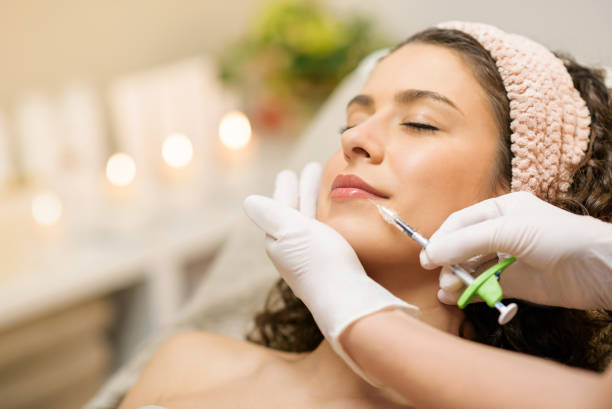
by bilalraja1 | Oct 16, 2025 | Health
As we age, our skin naturally begins to lose its volume, elasticity, and firmness, leading to the development of fine lines, wrinkles, and sagging skin. Many individuals seek effective solutions to combat these signs of aging and restore a more youthful, refreshed appearance. Among the most popular and non-invasive options are Fillers Injections in Abu Dhabi, which have gained widespread recognition for their ability to rejuvenate the face and enhance natural beauty. These treatments are designed to plump up areas that have lost volume, smooth out wrinkles, and redefine facial contours, providing a subtle yet impactful transformation.
In this comprehensive guide, we will explore how fillers injections work, their benefits, the common areas treated, and what to expect from the procedure. Whether you’re considering this treatment for the first time or looking to understand its advantages better, this article aims to provide detailed and informative insights into how fillers can help you achieve a more youthful appearance.
What Are Fillers Injections?
Definition and Composition
Fillers injections are cosmetic treatments that involve injecting a gel-like substance into targeted areas of the face to add volume, smooth out wrinkles, and improve overall facial contours. The most commonly used fillers are made of hyaluronic acid, a naturally occurring substance in the skin that helps retain moisture and elasticity. Other types of fillers may include calcium hydroxylapatite, poly-L-lactic acid, or polymethylmethacrylate microspheres, each designed for specific purposes and longevity.
How Do They Work?
The primary mechanism of fillers is to restore lost volume and support the skin’s structure from beneath. By replenishing hyaluronic acid or other materials, fillers effectively lift and plump areas that have become saggy or hollow over time. They also stimulate collagen production, further enhancing skin firmness and elasticity. This combination of immediate volume restoration and ongoing collagen stimulation makes fillers a versatile tool in facial rejuvenation.
Benefits of Fillers Injections
Immediate Results and Minimal Downtime
One of the main advantages of fillers injections is their ability to produce instant results. After the procedure, patients often notice a more youthful and refreshed appearance immediately. Additionally, the treatment involves minimal downtime, allowing individuals to resume their daily activities shortly after.
Non-Surgical and Customizable
Unlike invasive surgical procedures, fillers injections are non-surgical, making them an attractive option for those seeking subtle enhancements without the risks and recovery associated with surgery. The treatment is highly customizable, enabling practitioners to tailor the procedure to each patient’s unique facial anatomy and aesthetic goals.
Versatile Applications
Fillers are used to address a wide range of aesthetic concerns, including enhancing cheekbones, defining jawlines, augmenting lips, smoothing nasolabial folds, and reducing the appearance of marionette lines. This versatility makes them suitable for a broad demographic seeking facial rejuvenation.
Long-Lasting Yet Reversible
While results vary based on the type of filler used and individual factors, many fillers provide long-lasting effects, often between 6 to 18 months. Moreover, hyaluronic acid-based fillers can be dissolved with an enzyme called hyaluronidase if necessary, providing an added layer of safety and control over the outcome.
Common Areas Treated with Fillers Injections
Cheeks and Midface
Loss of volume in the cheeks can lead to a hollow or sagging appearance. Fillers help restore fullness, providing a lifted and more youthful look. Enhancing the midface also supports other facial structures, reducing the appearance of deep lines.
Lips
Lip augmentation is one of the most popular uses of fillers. They can add volume, improve shape, and create a more balanced facial profile. Whether a subtle increase or a more defined pout, fillers offer customizable results.
Nasolabial Folds and Marionette Lines
These lines run from the nose to the corners of the mouth and can deepen with age, giving a fatigued or aged appearance. Fillers soften these lines, restoring a smoother and more rejuvenated look.
Jawline and Chin
Contouring the jawline and chin can create a more defined and balanced facial profile. Fillers can enhance these areas, improving proportion and symmetry.
Under-Eye Hollows
Dark circles and hollows beneath the eyes can make a person look tired or aged. Carefully placed fillers can reduce shadows and restore a fresh, vibrant appearance.
The Procedure: What to Expect
Consultation and Customization
Before undergoing treatment, a thorough consultation is essential to discuss aesthetic goals, medical history, and any concerns. The practitioner will evaluate facial anatomy and recommend suitable filler types and injection sites.
The Injection Process
The procedure typically involves cleaning the targeted area, applying a numbing agent or using a numbing syringe, and then injecting the filler with fine needles or cannulas. The process is generally quick, often completed within 30 to 60 minutes.
Post-Treatment Care
After the injections, patients are advised to avoid strenuous activities, excessive sun exposure, and certain medications that may increase bruising. Mild swelling or bruising may occur but usually resolves within a few days.
Why Choose Fillers Injections?
Natural-Looking Results
When performed by experienced practitioners, fillers provide natural-looking enhancements that preserve individual facial characteristics while reducing signs of aging.
Safety and Reversibility
Fillers made of hyaluronic acid are considered safe and reversible, offering peace of mind for those trying the treatment for the first time or seeking subtle improvements.
Minimal Discomfort and Quick Recovery
The procedure involves minimal discomfort with rapid recovery, making it suitable for busy lifestyles.
Long-Lasting Results
While not permanent, the longevity of fillers means fewer repeat treatments, maintaining youthful results over time.
How to Maximize Results and Maintain Youthfulness
Follow Post-Treatment Recommendations
Adhering to post-procedure guidelines can enhance results and reduce side effects. This includes avoiding excessive movement of the treated area and refraining from applying pressure or massage.
Regular Maintenance Treatments
Periodic touch-ups help sustain optimal results. Consulting with an expert to develop a personalized maintenance plan ensures consistent appearance.
Incorporate Skincare and Lifestyle
Using high-quality skincare products, staying hydrated, protecting skin from sun damage, and maintaining a healthy lifestyle all contribute to long-term skin health and youthful appearance.
Conclusion
Fillers Injections Abu Dhabi provide a safe, effective, and non-invasive way to restore a youthful and radiant appearance. By adding volume, smoothing lines, and contouring facial features, fillers enable individuals to achieve natural-looking rejuvenation tailored to their aesthetic goals. Whether aiming to enhance specific areas or undergo a comprehensive facial refresh, this treatment offers immediate results with minimal downtime, making it an ideal choice for those seeking subtle yet impactful improvements. If you are considering facial rejuvenation options, discussing your goals with a qualified practitioner can help determine if fillers are the right solution to help you look and feel your best.





